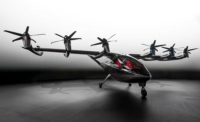Most people know them as drones and believe they are strictly used in the sky. But, their official name is unmanned aerial vehicles (UAVs), and they can also be used in confined spaces inside or outside. Where the UAV is primarily used has a great impact on the design of its unmanned aerial system.
“Many aerial systems are equipped with standard components,” says Jörg Nolte, product manager of soldering tools, rework and inspection systems at Ersa GmbH. “But, flying in enclosed spaces also requires good communication and navigation transmission, as well as powerful, dimmable small headlights.”
Bielefeld, Germany-based manufacturer U-ROB GmbH has been making drones since 2015. Last year, it purchased several Ersa i-CON NANO soldering systems to help workers manually assemble electronic modules for the company’s Quadrocopter ROBi.
“[Common] industrial applications of the ROBi include the inspection of pipelines and combustion chambers in power plants,” explains Joseph Metz, founder and managing director at U-ROB. “Also, the inspection of chimneys, tanks and sewage pipes, as well as the interior of bridge structures.”
ROBi is equipped with an exchange mechanism for different sensors and camera systems. This feature greatly increases the drone’s flexibility on any project.
“[Let’s say] during the interior inspection of a large tank we discover a possibly defective area on weld seam images [taken by] the camera,” continues Metz. “We can replace the camera system with one that [either] measures the coating thickness or takes a sample. [This] allows us to tell the customer how serious the damage is.”
For these types of applications, ROBi is equipped with an RGB camera that has a resolution of 12 megapixels. Because ROBi usually operates in dark surroundings, the camera is fitted with dimmable high-power LEDs. Both the camera and LEDs can be turned by remote control 180 degrees up and down. Plus, they are mounted so as to not be negatively impacted by operational vibrations.
“For [most] electronic components, we try to work with existing assemblies,” notes Metz. “But, [for] the camera lighting system, we had to develop our own solution.”
After extensive trial and error, the company’s assembly process now requires workers to manually solder the LEDs on the PCB due to packaging density and miniaturization. According to Mertz, manual soldering provides a reliable connection for varying individual payloads. This is critical, since the possibility of changing payloads is a unique selling point of the ROBi.
“We [now] seem to have the right manual soldering solutions for drone manufacturing, because [sales] requests are increasing,” says Nolte. “Our industry observation shows that [customer] demand for quality and new technologies, combined with [challenging] applications and component miniaturization, is causing European drone manufacturers to specialize.”
Ersa’s i-CON NANO system consists of an 80-watt digital soldering station and an ultra light, ergonomic i-TOOL NANO soldering iron, on which different tips can be easily mounted. Measuring only 145 by 80 millimeters, the system provides three fixed temperatures, but also lets the worker adjust the setting from 150 C to 450 C. Energy levels are also adjustable, and soldering parameters can be set via PC software or a microSD card. An automatic standby and shut down mode extends tip life, while saving additional energy.
For more information on manual soldering tools, call 920-893-1779 or visit www.kurtzersa.com.







